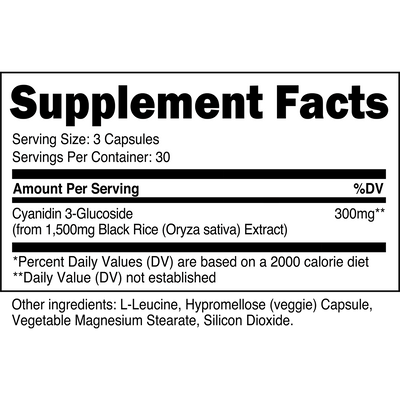4 Resistance Band Workouts You Can Do at Home

Resistance bands are versatile pieces of workout equipment that can make almost any exercise easier or more challenging. In this article, we'll give you five reasons why resistance-band workouts should be part of your overall fitness regimen. We’ll also list four resistance-band exercises you can use for a full-body at-home workout.
What Are Resistance Bands?
Resistance bands are elastic bands used to intensify cardio workouts or for strength training, stretching, and general fitness. They're color-coded to indicate resistance levels. Specific colors can vary among manufacturers, but lighter-colored bands often have lower resistance levels.
Resistance bands can also vary in thickness. Thinner resistance bands have less tension, which makes them good for beginners. The thicker the band, the tougher it is to stretch — and the bigger the muscle group it benefits.
There are six categories of resistance bands:
- Therapy bands: Flat bands without handles, used for physical therapy
- Tube bands: Tubular bands with handles on the ends, suitable for upper-body and lower-body workouts
- Fit loop bands: Flat circular bands, best for lower-body workouts
- Figure-eight bands: Shorter looped bands with plastic handles, good for building the upper-body
- Ring resistance bands: Small circular bands with soft handles used for lower-body exercises
- Lateral resistance band: Has Velcro ankle cuffs, designed for lower-body workouts
5 Benefits of Resistance-Band Workouts

Resistance-band training has numerous benefits. Here are five reasons to incorporate resistance-band workouts into your fitness regimen.
1. You'll Get a Full-Body Workout
Resistance bands help you build strength throughout your entire body. In fact, studies show resistance band training provides strength gains similar to weight machines and dumbbells [1].
2. They're Inexpensive
Resistance bands provide similar results as weight machines at a fraction of the cost.
A set of beginner resistance bands generally run for under $20 at most retailers. Even a high-quality set of resistance bands shouldn't set you back more than $60. That’s a bargain compared to an annual gym membership or an at-home weight training machine.
3. They're Versatile for All Fitness Levels
Resistance bands are beginner-friendly since they can be used to modify exercises.
Conversely, seasoned athletes can add high-level resistance bands to their exercises for a more intense workout.
4. They’re Portable
Want to do some strength training on vacation? Lugging your dumbbells and kettlebells around is inconvenient, if not impossible. Resistance bands, on the other hand, are light enough to put in a suitcase. Most sets even include a tote bag.
5. They Can Help Build Your Flexibility
Resistance bands can help increase your flexibility and range of motion. You can get a full-body stretch by using just one resistance band.
You can also use a resistance band to modify or increase the intensity of your yoga workouts.
4 Resistance-Band Workouts You Can Do at Home
If you can't make it to the gym, resistance-band workouts are an excellent alternative. These resistance-band exercises help you get a total-body workout in the comfort of your own home. You'll only need one resistance band for all of these workouts.
1. Resistance Band Bent-Over Row

What it is: This is a safer alternative to the high-risk barbell exercise.
Targeted areas: Latissimus dorsi (middle and lower back). Your upper arms, shoulders, and abdominal muscles will also benefit from this exercise.
Stand on a resistance band with your feet hip-width apart and a slight bend in your knees. Cross the band so your right hand grabs the left side of the band and vice versa. Tip your upper body forward at the waist. Keep your back straight, shoulders low, and neck neutral.
Exhale and lift the band towards your chest, keeping your elbows tucked while squeezing your shoulder blades together. Inhale upon returning to starting position.
Maintain a neutral posture throughout the exercise. Do not arch your back, bring your neck upward, or lift your shoulders.
- Upright row: To relieve pressure on your back, tether a resistance band to a stable point and perform the same motion with your upper body upright. Don’t pull the band with too much force from this position, or you'll lose balance.
- Sitting row: Tie a resistance band to a stable point, and sit with your legs straight in front of you or slightly bent if your hamstrings are tight. Pull the band towards your chest. Squeeze your shoulders together then return to the starting position.
2. Resistance Band Biceps Curls

What it is: You don't need dumbbells or kettlebells to do this classic upper-arm workout. Resistance bands work just as well.
Targeted areas: Biceps and forearms.
Stand on a resistance band with your feet shoulder-width apart and your knees soft. With an underhand grip, grab the handles of the resistance band. Isolate your movement to the biceps and forearms.
Pull (curl) the band up to your shoulders or as far as your range of motion allows. Hold briefly at the apex, then bring your arms back to the starting position.
If you're new to doing bicep curls with a resistance band, start with a thinner band with less tension and work your way up to a heavier band.
- From seated: Sit on a chair or bench with your feet firmly on the resistance band. Grab both sides of the band and pull up towards your shoulders. Hold briefly then return to the starting position.
- From a lunge: Try a lunging bicep curl for a challenge. Bend your front leg at a 90-degree angle and loop a resistance band around your thigh. Pull the band up towards your chest like you would when doing a dumbbell curl, keeping your elbow close to your side. Hold briefly before returning to the starting position. Switch sides so you work both arms.
3. Resistance Band Squats

What it is: Work your glutes, quads, and more by adding a resistance band to this popular exercise.
Targeted areas: Glutes, quadriceps, lower back, and hamstrings.
Step both feet onto a flat-looped resistance band with your feet shoulder-width apart. From a low squat position, slide the rest of the resistance band onto your shoulders.
Cross your arms at your chest then slowly bring yourself upright. From there, do your squats as normal, keeping your arms crossed at chest height.
To safely remove the resistance band, get into a low squat position, then slide the band off your shoulders.
- Modification: Use a resistance band with handles. Stand on the band with your feet hip-width apart. Lift the handles of the band up to your shoulders. Then, squat down. Squeeze through your glutes to come back up.
- Split squats: Assume a lunge position with your back knee on the floor and front leg at a 90-degree angle. Place your front foot on the band, then wrap the rest of the band across your torso. Push yourself up without locking your knees.
4. Resistance Band Push-Ups

What it is: Level up your push-ups by adding a resistance band. This will further engage your chest muscles and help improve your overall push-up technique.
Targeted areas: Chest muscles, abdominal muscles, shoulder muscles, and triceps.
Grip a resistance band and place it across the back of your shoulders, then do a standard push-up. Practice good form by keeping your elbows tucked, your hands underneath your shoulders, and your back in a straight line.
You should feel tension when you return to the top of the push-up.
- Modifications: For a challenge, use two resistance bands or one very thick band. You can also do this resistance-band workout with knee push-ups for a simpler workout that will still engage your upper body and core.
- Plank jacks: Resistance band plank jacks work your core and legs. Loop a resistance band around your ankles, and assume a forearm plank position. Kick your feet out, then bring them back to the center.
Upgrade Your Home Workout Routine With Resistance Bands
Whether you can't make it to the gym or need a change in your workouts, resistance bands can help. Best of all, resistance-band workouts are accessible for everyone regardless of income or fitness level.
Shake up your at-home workout routines even further with isometric exercises to increase your strength and flexibility. You can use resistance bands for most of these exercises, too.
Exercise helps create lean muscle, but only in conjunction with a proper diet and the right supplements. As always, consult your doctor before starting any full-body workout program or diet plan.







